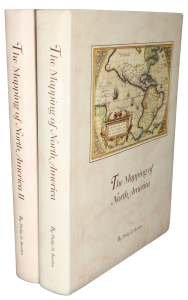Rare Maps and Prints
- World & Celestial
- North America
- West Indies, South & Central America
- British Isles
- British Isles
- English counties
- Large-scale
- Bedfordshire
- Berkshire
- Buckinghamshire
- Cambridgeshire
- Cheshire
- Cornwall
- Cumberland
- Derbyshire
- Devon
- Dorset
- Durham
- Essex
- Gloucestershire
- Hampshire
- Herefordshire
- Hertfordshire
- Huntingdonshire
- Islands
- Kent
- Lancashire
- Leicestershire
- Lincolnshire
- Middlesex
- Norfolk
- Northamptonshire
- Northumberland
- Nottinghamshire
- Oxfordshire
- Rutland
- Shropshire
- Somerset
- Staffordshire
- Suffolk
- Surrey
- Sussex
- Warwickshire
- Westmoreland
- Wiltshire
- Worcestershire
- Yorkshire
- Wales
- Scotland
- Ireland
- Western Europe
- Eastern Europe
- Middle East
- Africa
- Asia
- Australasia & Pacific
- Decorative Prints
- Title Pages
Mr. Philip D. Burden
P.O. Box 863,
Chalfont St. Giles, Bucks HP6 9HD,
UNITED KINGDOM
Tel: +44 (0) 1494 76 33 13
Email: enquiries@caburden.com
“The region of Carolina was granted by King Charles II following his restoration to the throne in settlement of political debts. The region had been covered by earlier grants but had never been properly settled. The charter of 1663 granted control of the territory between 31 and 36 degrees to eight Lords Proprietors. Many of these were Royalist refugees who had fled during the Commonwealth era in England, some to Barbados, from where many of the early settlers came. In 1662, in the employ of intending settlers of New England, a William Hilton from Charlestown, Massachusetts, explored the coastline. In the ‘Adventure’ he particularly noted the waters of the ‘Charles River’, or the Cape Fear River. A manuscript map of the voyage was drawn by Nicholas Shapley which is now lost. However, a copy was made, most probably by John Locke, and survives today in the British Library, London. The following year Hilton returned on behalf of some of the Lords Proprietors. He described this voyage in his ‘A Relation of a Discovery lately made on the Coast of Florida’, 1664. This time he went as far south as Port Royal. Hilton Head Island was named after him. In 1664 a number of planters from Barbados settled ‘Charles Town’ which was abandoned in 1667. It is often confused with the later Charleston at the confluence of the Ashley and Cooper Rivers which is further south.
“Information on the map is clearly derived from both the Shapley manuscript and the ‘Relation’, although some other sources do appear to have been used. The present day ‘C. Fear’ is so named for the first time; this originally applied to Cape Lookout whose position is now taken by ‘C. Hope’. To the north, at the mouth of the ‘Albemarl Riv.’ is ‘Colleton Ile’. These are named after the Proprietors and appear for the first time. The map highlights the first short-lived colony of ‘Charles Town’ on the Cape Fear River. The coastline between here and the old French settlement of Port Royal is sketchy owing to a storm which prevented Hilton from exploring these waters. The origin of the soundings is unknown as they do not follow the Shapley manuscript. The map is adorned by various creatures of the region and, curiously, a ‘Silk worm'” (Burden). This is only the second printed map to name the English colony, the first was on a more general map by Joseph Moxon in 1664 which survives in just the one known example in the Stokes Collection in the New York Public Library. Provenance: private English collection. Burden (1996) 392; Church (1907) 595; Cumming (1962) 60; Cumming, Hillier, Quinn and Williams (1974) pp. 86-8.
Carolina Described
SOLD






